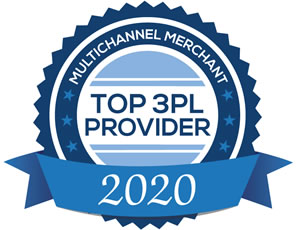
I asked Dan Cence, CEO of Sprocket Express, what a new client should expect (and get) from their fulfillment partner. “Hands down, professional forecasting,” he said. Small businesses often overlook the value of forecasting in supply chain management. But they should expect this to be offered by a 3PL to help them efficiently predict demand.
To predict inventory demand in the long term, a business must take into account manufacturing lead times, sales, delivery times, and carrying costs. Initially, this is a challenge of insufficient data, but later in the business cycle, it often becomes a crisis of too much information and inexperience.
“Forecasting isn't easy, especially when it's about the future,” Cence joked, “but it's one of the most valuable tools a business can use for efficiency.”
Sales Projections
In general, to determine the right amount of inventory to carry, analyze the sales projections. This calculation takes into account the seasonality of the product. Some products peak in December, while others peak in May or September. Others are more steady throughout the year. Is your product seasonal? It helps to take a look at the past 12 months to see the peaks and valleys of demand.
Then look at recent trends. Is business increasing or decreasing? This can easily vary across SKUs, so some of your products may be increasing in demand, while others are less popular than before. When you review sales, keep in mind promotions that you ran or plan to run. These can naturally affect demand.
It Takes a Village
Once you pinpoint an inventory level, you will need to look at the lead times. Keeping track of order vs. delivery dates from suppliers is very helpful in this regard because they often do not meet quoted lead times. One Sprocket Express client ordered a custom blend product from a specific supplier who offered the best price and process. The manufacturer gave a 4-6 week lead time, but routinely delivered 12+ weeks after the PO was generated. “It never stopped being frustrating to the client,” Cence notes, “But we helped them adjust their forecast and they stopped having to face out of stocks.”
Software is infinitely helpful in determining these forecasts. After all, most businesses have more than one product and the human error factor is pretty high. Ideally, an experienced supply chain manager works with specialized software to assess and predict demand. This is a perfect example of the human factor in the application of new technologies.
Experience and Certification
Sprocket Express managers are certified in product management logistics. They have experience forecasting demand and toning up supply chain efficiency. With a lean supply chain, your business saves money while still meeting demand without backorders. Sprocket offers a la carte professional forecasting services, depending on the intricacy and volume of data. Contact us with your questions, we're always here.
Business Tips and Industry News
For more news and tips on all things business and e-commerce, visit our e-zine. Our e-zine is also available as an rss feed.



